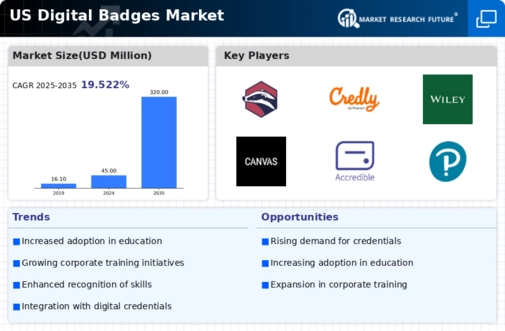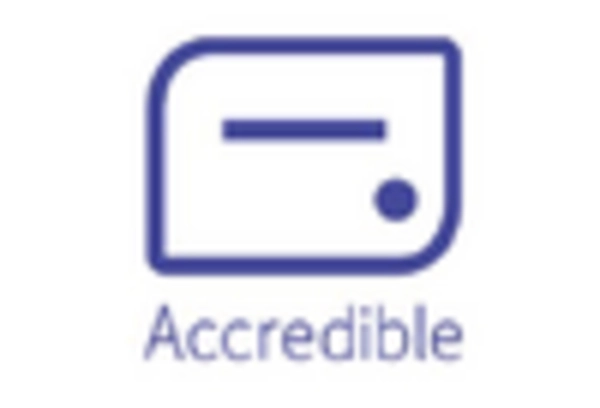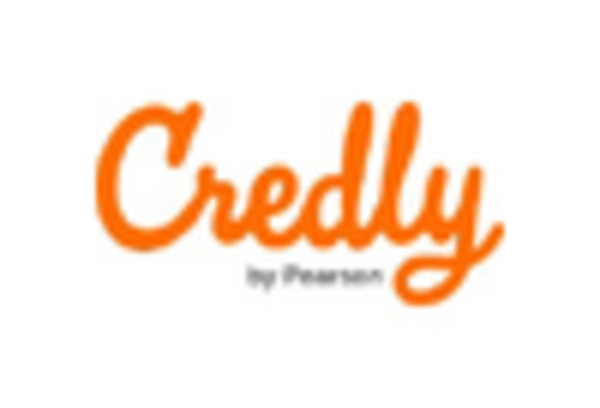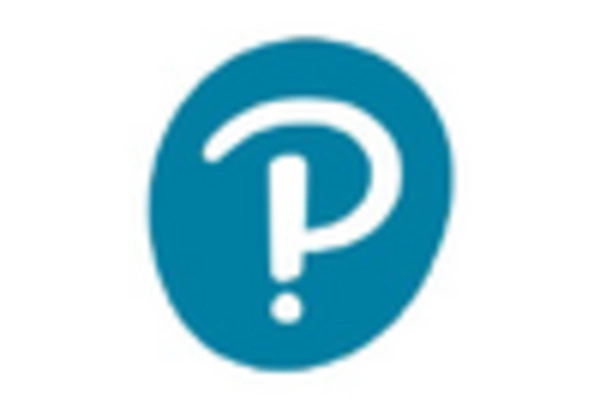The digital badges market is currently characterized by a dynamic competitive landscape, driven by the increasing demand for credentialing and skills recognition across various sectors. Key players such as Credly (US), Badgr (US), and Accredible (US) are at the forefront, each adopting distinct strategies to enhance their market presence. Credly (US) focuses on innovation through the development of advanced digital credentialing solutions, while Badgr (US) emphasizes partnerships with educational institutions to expand its user base. Accredible (US) is strategically positioned to leverage its integration capabilities with Learning Management Systems (LMS), thereby enhancing user experience and operational efficiency. Collectively, these strategies contribute to a competitive environment that is increasingly reliant on technological advancements and user-centric solutions.
In terms of business tactics, companies are increasingly localizing their operations and optimizing supply chains to enhance service delivery. The market structure appears moderately fragmented, with several players vying for market share. This fragmentation allows for diverse offerings, yet the influence of major players remains significant, as they set benchmarks for innovation and customer engagement.
In October 2025, Credly (US) announced a partnership with a leading online education platform to integrate its digital badge offerings directly into their course completion processes. This strategic move is likely to enhance the visibility of Credly's credentials, making them more accessible to learners and employers alike. By embedding its solutions within popular educational frameworks, Credly (US) positions itself as a critical player in the credentialing ecosystem, potentially increasing its market share.
In September 2025, Badgr (US) launched a new feature that allows users to create custom badges tailored to specific skills and achievements. This innovation not only enhances user engagement but also allows organizations to recognize unique competencies within their workforce. The ability to customize badges may attract more organizations seeking to implement tailored recognition programs, thereby expanding Badgr's market reach.
In August 2025, Accredible (US) introduced a blockchain-based verification system for its digital badges, enhancing security and trust in credentialing. This move is particularly significant as it addresses growing concerns regarding the authenticity of digital credentials. By adopting blockchain technology, Accredible (US) not only strengthens its product offering but also positions itself as a leader in secure credentialing solutions, which could be a decisive factor in attracting enterprise clients.
As of November 2025, the competitive trends in the digital badges market are increasingly defined by digitalization, sustainability, and the integration of artificial intelligence (AI). Strategic alliances among key players are shaping the landscape, fostering innovation and enhancing service delivery. Looking ahead, it appears that competitive differentiation will evolve from traditional price-based competition to a focus on innovation, technological advancements, and supply chain reliability. Companies that can effectively leverage these trends are likely to secure a competitive edge in the rapidly evolving market.
















Leave a Comment